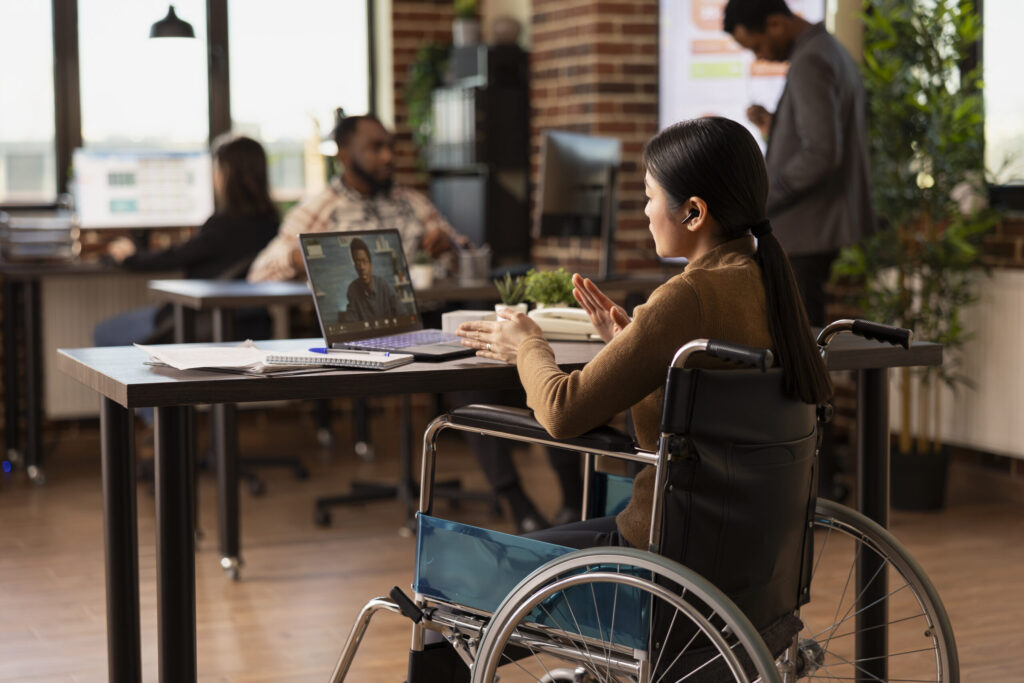
Nature of the Hazard Exposure
- Frequency – how often workers are exposed (e.g. repeated customer aggression).
- Duration – how long exposure lasts (e.g. extended shifts).
- Severity – potential seriousness of harm (e.g. prolonged bullying leading to psychological injury).
- Combination of hazards – whether multiple risks overlap (e.g. high workload + poor supervision).
Work Design and Job Demands
- Workload (too much/too little, time pressure).
- Role clarity (conflicting or unclear duties).
- Job control (autonomy, decision-making).
- Emotional demands (exposure to trauma, conflict, or distressed clients).
- Cognitive demands (complex tasks, constant monitoring).
Example: A call centre with strict scripts + monitoring + high call volumes = multiple psychosocial stressors.
Systems of Work and Organisational Factors
- Management style (supportive vs authoritarian).
- Organisational change (restructuring, job insecurity).
- Reward and recognition practices.
- Opportunities for training, career development.
- Reporting systems for psychosocial hazards.
Example: A hospital introducing a new IT system without training = stress + frustration.
Workplace Environment and Conditions
- Physical environment (noise, lighting, cramped spaces).
- Remote or isolated work.
- Exposure to heat/cold or poor ergonomics.
- Availability of welfare facilities (rest areas, food, bathrooms).
Example: Field workers without safe access to toilet facilities → increased stress and fatigue.
Workplace Relationships and Behaviours
- Bullying, harassment, discrimination, violence.
- Support from supervisors and peers.
- Team conflict or poor communication.
- Levels of trust and respect.
Example: Warehouse staff experiencing repeated verbal abuse from supervisors → high psychosocial risk.
Workforce Characteristics
- Diversity (cultural, gender, disability) and inclusion practices.
- Vulnerable workers (young, casual, migrant, shift workers).
- Individual differences (experience, resilience, language barriers).
Example: Migrant workers with limited English placed in high-stress customer service roles without training.
Remote Work and Technology Use
- Isolation from team/manager.
- Always-on culture (emails after hours).
- Tech monitoring and surveillance.
- Access to IT support.
Example: Remote employees pressured to stay online late due to constant messaging systems.
Accommodation and Living Conditions (if provided by employer)
- Suitability, safety, and privacy of housing.
- Access to essential services.
- Social isolation in remote mining camps.
Example: FIFO (fly-in fly-out) workers in mining camps reporting loneliness, fatigue, and poor amenities.
Putting It Together
When reviewing psychosocial risks, employers should ask structured questions like:
- What are the demands of the work?
- How much control do workers have?
- Are roles and expectations clear?
- What is the quality of relationships at work?
- Does the environment contribute to stress?
- Are there special risks for vulnerable or remote workers?
- Are support and recovery systems available?
These factors come directly from Model WHS Regulations Part 3.1 (Regs 55A–55D), NSW Code of Practice 2021, and upcoming Victoria OHS (Psychological Health) Regulations 2025.
Overview: Psychosocial Risk Strategies & Outcomes in Australian Workplaces
Work Redesign Interventions in Aged Care
- A Safe Work Australia–funded participatory work-redesign study conducted in four residential care facilities demonstrated that involving staff in redesigning work tasks led to effective and cost-efficient reductions in job demands.
- The process not only directly addressed psychosocial hazards but also enhanced engagement and sustainability of improvements.
Safe Work Australia DataSafe Work Australia
NSW Mentally Healthy Workplaces Strategy (2018–2022)
- This extensive initiative supported over 92,900 businesses (exceeding 100% of its target), delivering:
- Workplace mental health training to 25,000+ participants with a 99% recommendation rate,
- Coaching support to 1,000+ small and medium enterprises (SMEs),
- Tools that sustained improvements in productivity and reduced claim costs and time off work.
NSW Government+1
Targeted Strategy for Small Businesses (NSW, 2024–2026)
- Under its 2024–2026 psychological health and safety strategy, NSW is investing $5.6 million to support SMEs via partnerships with Black Dog Institute and Transitioning Well.
- The strategy aims to boost mental health capability across high-risk sectors, support culturally and linguistically diverse (CALD) workers, and increase inspector-led compliance.
NSW Government+1
Demographic Risk Insights & Intervention Gains
- A 2025 EML white paper, Inside the Minds of Australia’s Workplaces, shows that well-designed, targeted interventions are already delivering measurable improvements in recovery rates and return-to-work outcomes.
EML
Academic Sector: Rising Risks and Awareness
- Surveys conducted by the Psychosocial Safety Climate Global Observatory revealed that among university staff, exposure to high psychosocial risk surged from 26.6% (2020) to 39.6% (2024).
- This highlights the urgency of implementing targeted safety strategies in the tertiary sector.
The Australian
Psychosocial Safety Climate (PSC) and Productivity
- Research shows that improving PSC — a workplace’s climate for psychological safety — can drive dramatic benefits, including:
- 14% reduction in job strain
- 13% reduction in worker depression
- 43% reduction in sickness absence
- 72% reduction in presenteeism
The annual organisational cost of poor PSC is estimated at $6 billion.
Wikipedia
Standards & Strategic Tools Adoption
- The AS/NZS ISO 45003:2021 standard has been released to help workplaces align psychosocial risk management within broader OH&S systems. Although voluntary, it’s gaining traction as best practice.
Standards Australia - The Psychosocial Safety Net—offered by AIHS in partnership with Australian Psychological Services—provides organizations free, expert consultations to help prioritize and manage psychosocial risk controls.
AIHS
Summary Table: Strategies & Outcomes
| Strategy / Tool | Primary Outcome(s) |
| Aged-care work redesign (SMARTer Work) | Reduced job demands; better engagement via staff involvement |
| NSW Mentally Healthy Workplace Strategy | Broad uptake, effective training, claims and absence reductions |
| NSW Small Business Support (2024–26) | Enhanced SME capability tailored for high-risk sectors and worker groups |
| Targeted interventions (EML findings) | Improved recovery and return-to-work metrics |
| University staff risk data | Sharp rise in psychosocial risk exposure (26.6% → 39.6%) – accelerates the need for action |
| PSC improvements | Significant decreases in strain, depression, absenteeism, and presenteeism |
| ISO 45003 adoption | Integration of psychosocial risk within existing safety management systems |
| Psychosocial Safety Net | Accessible expert guidance boosting organisational risk management |
Key Takeaways
- Staff-driven interventions—like participatory work redesign—are highly effective.
- Widespread strategy adoption (e.g. in NSW) can yield large-scale cultural and practical improvements.
- Measurable productivity gains follow from improvements in psychosocial safety climate.
- Clear hotspots (like universities) show where intensified prevention is urgently needed.
- Embedding psychosocial safety in standards and expert support offers sustainable system-level improvements.



